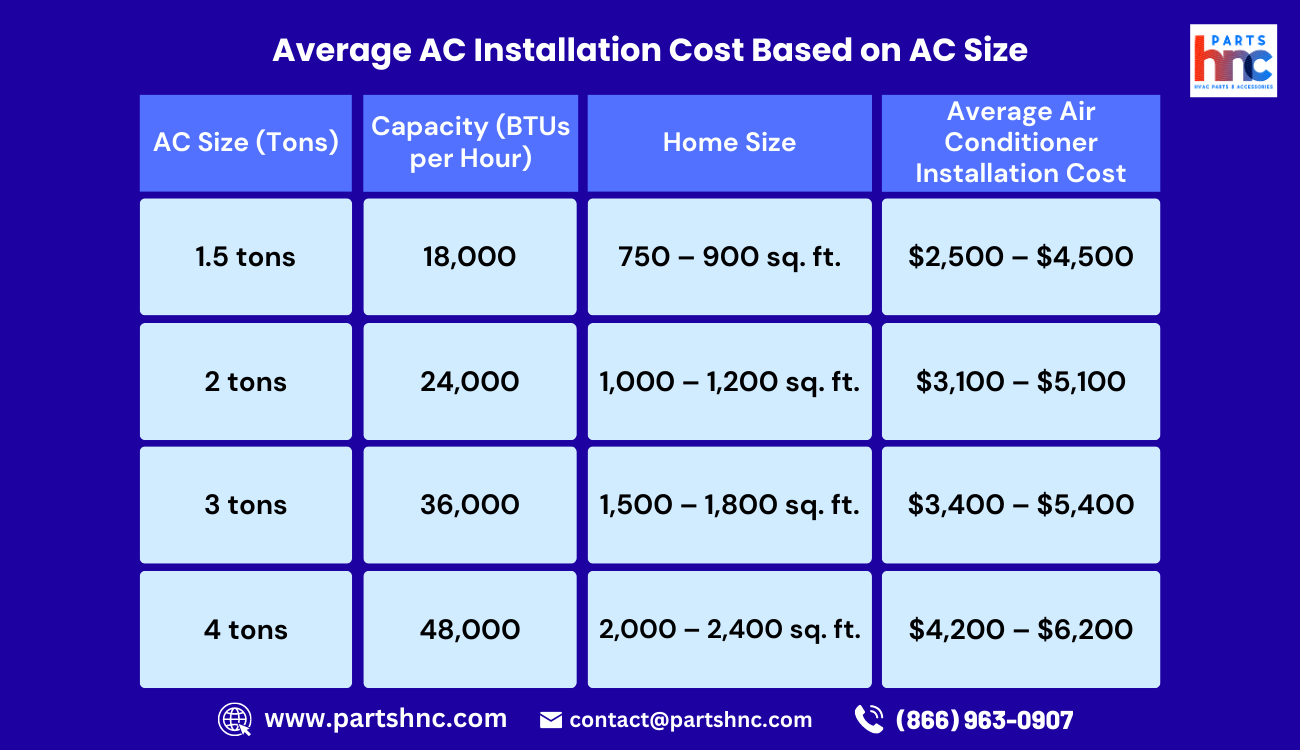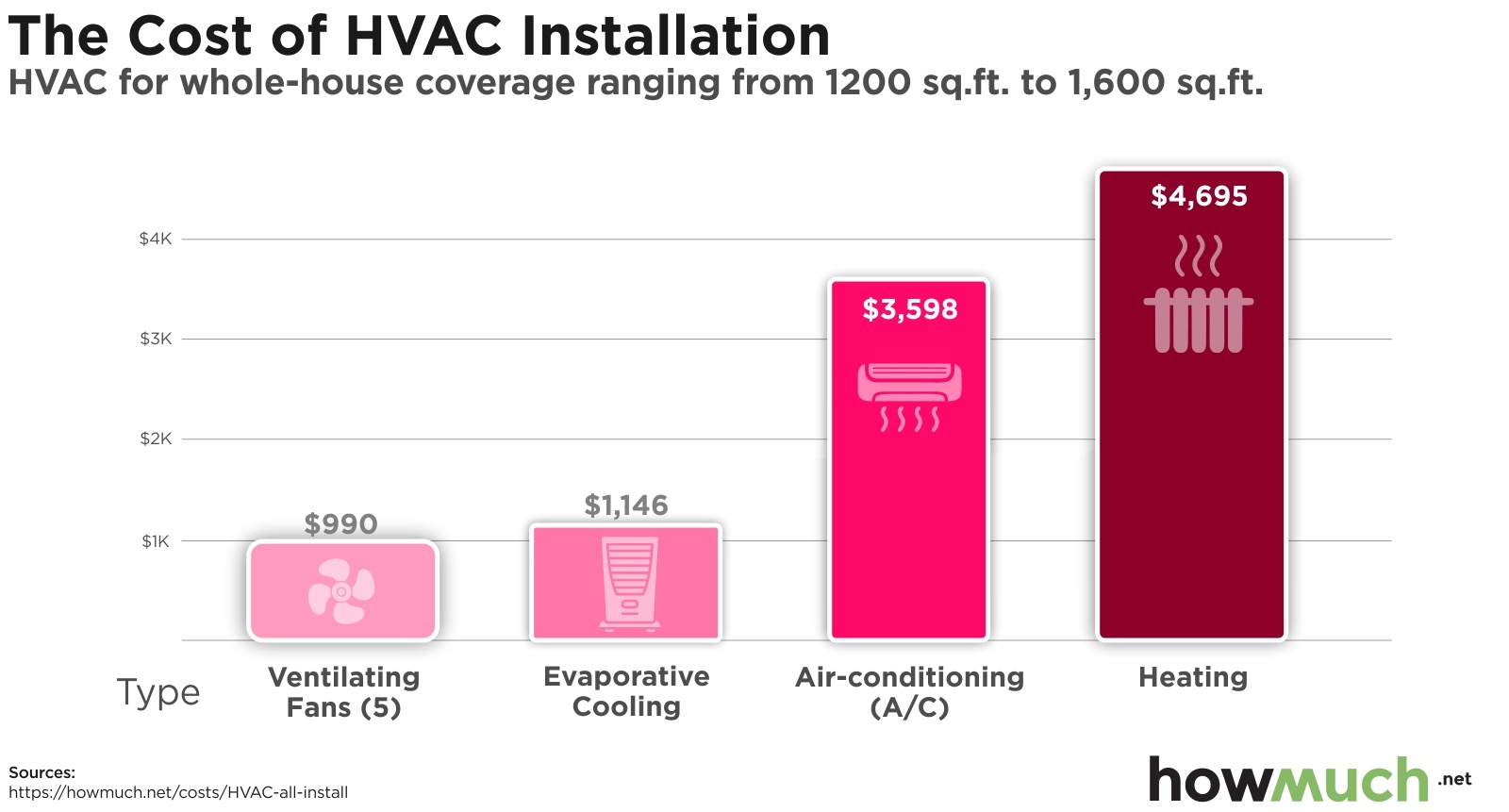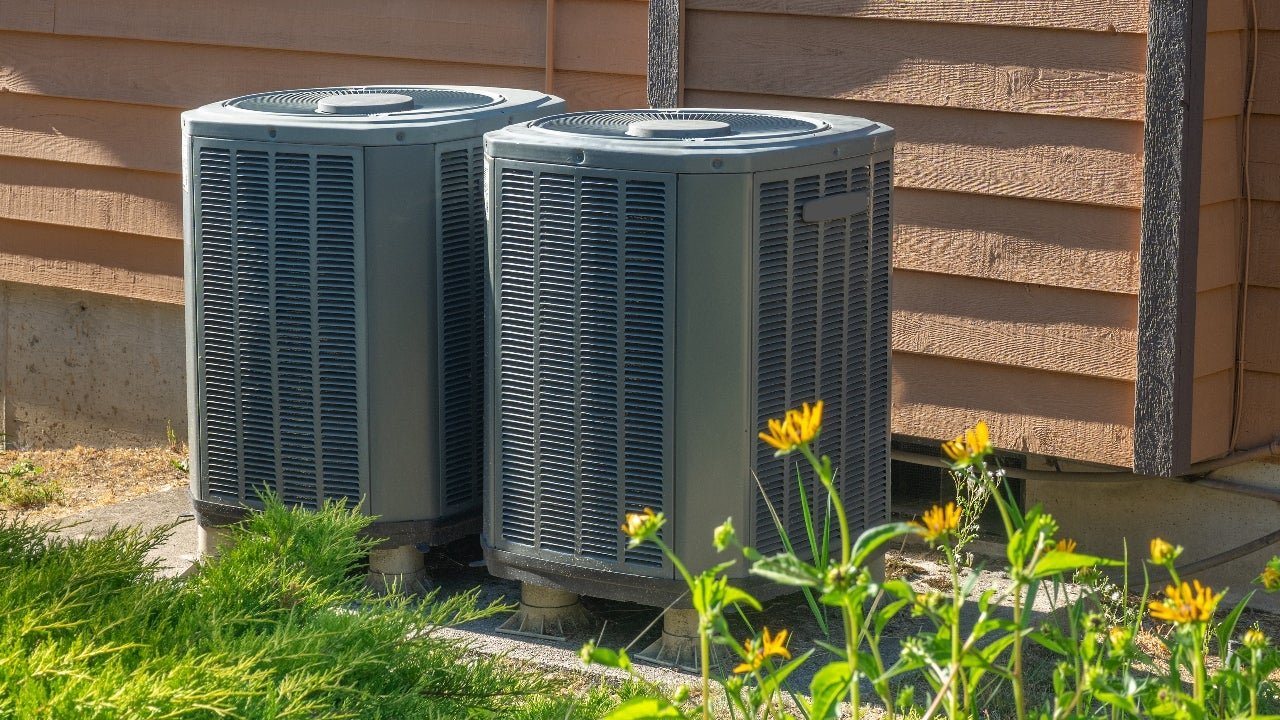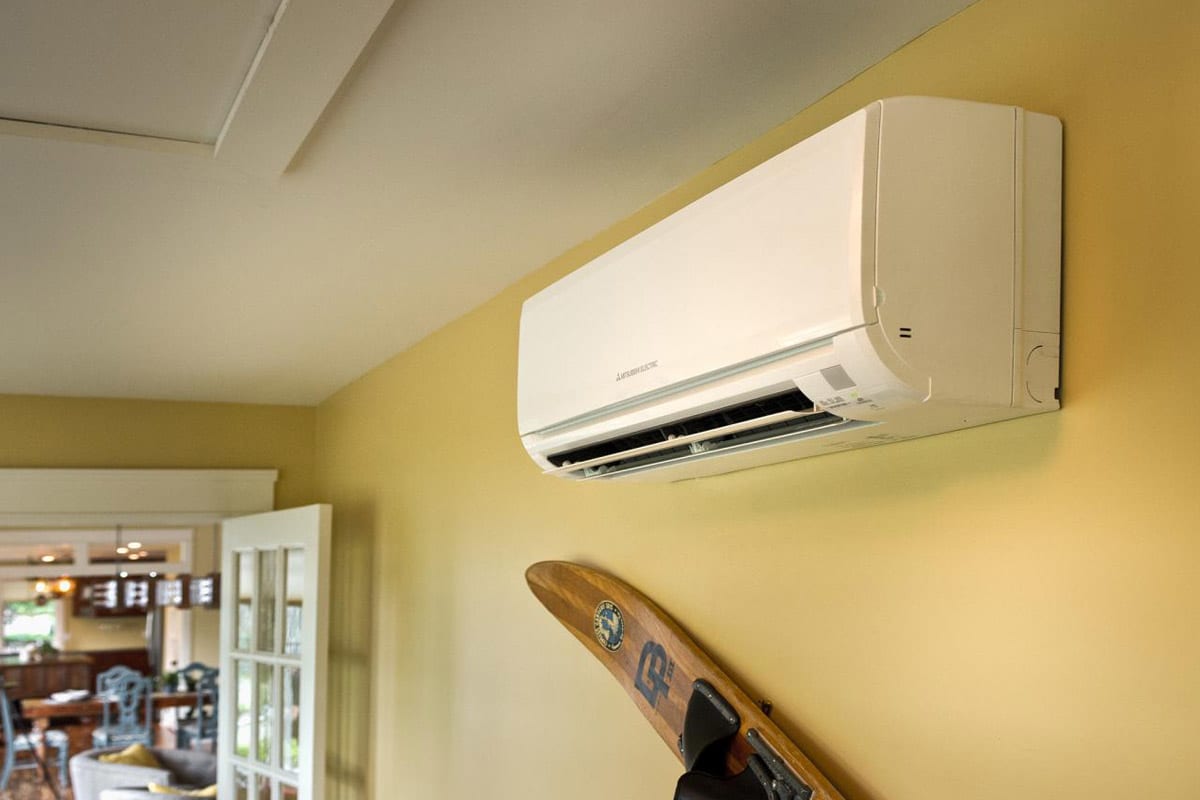How Much Does It Cost To Put Ac In House

Many homeowners face the daunting question: "How much does it really cost to put AC in my house?" It's a significant investment, and navigating the pricing landscape can feel overwhelming. This article aims to break down the costs involved, guide you through initial troubleshooting, and help you determine when it's time to call in the professionals.
The Common Problem: Uncomfortably High Quotes and Uncertainty
The most common problem homeowners encounter is a lack of clarity. Receiving wildly different quotes from various HVAC companies, coupled with a lack of understanding of *why* the prices vary so much, leaves many feeling vulnerable and unsure about making the right decision. This feeling of uncertainty can lead to procrastination, which only exacerbates the discomfort of a hot house.
Step-by-Step Guide: Initial Diagnosis and DIY Checks
Before you even start collecting quotes, it's essential to understand your home's cooling needs and perform some basic checks. This will not only empower you with knowledge but also help you ask informed questions when speaking to HVAC technicians.
Step 1: Assess Your Home's Cooling Needs
The size of your home is the most significant factor. However, it's not the only factor. Consider these elements:
- Square Footage: Measure the total square footage of the area you want to cool. This is the primary determinant of the AC unit's required capacity.
- Insulation Quality: Poor insulation means more heat enters your home, requiring a more powerful (and expensive) AC unit. Check your attic, walls, and windows for drafts or inadequate insulation.
- Window Glazing: Single-pane windows are less efficient than double-pane or low-E windows, allowing more heat to penetrate.
- Sun Exposure: Homes with significant southern or western exposure will require more cooling power due to increased solar heat gain.
- Number of Occupants: More people generate more heat, so a larger family will generally need a more robust AC system.
- Ceiling Height: High ceilings increase the volume of air that needs to be cooled, impacting the required AC capacity.
Take detailed notes of these factors. This information will be invaluable when discussing your needs with HVAC professionals.
Step 2: Identify Existing Infrastructure (or Lack Thereof)
The presence or absence of existing ductwork significantly impacts the cost. Consider these scenarios:
- Existing Ductwork: If you already have a forced-air heating system with ductwork, adding central AC is typically more affordable.
- Partial Ductwork: You might have ductwork in some areas but not others. This requires careful planning and potentially new ductwork installation.
- No Ductwork: Installing a central AC system without existing ductwork is the most expensive option. Alternatives like ductless mini-split systems might be more cost-effective.
Document the existing ductwork layout and condition. Note any areas where ductwork is missing or damaged.
Step 3: Basic DIY Troubleshooting – Before Calling a Pro
Even if you suspect a major issue, performing these simple checks can save you time and money.
- Check the Thermostat: Ensure the thermostat is set correctly to "Cool" mode and the desired temperature is lower than the current room temperature. Sounds obvious, but it's a common oversight! Also, check the batteries.
- Inspect the Air Filter: A dirty air filter restricts airflow, making the AC unit work harder and less efficiently. Replace the filter regularly (every 1-3 months, or more often if you have pets or allergies). This is a *very* simple and cheap fix that can have a significant impact.
- Check the Outdoor Unit (Condenser): Ensure the outdoor unit is free of obstructions, such as leaves, grass clippings, or overgrown plants. Clear away any debris that could be blocking airflow. Use a garden hose (with a gentle spray setting) to clean the fins of the condenser unit. Turn off the power to the unit at the breaker before cleaning!
- Check the Breaker: Locate the circuit breaker that controls the AC unit and make sure it hasn't tripped. If it has, reset it. If it trips again immediately, there's likely a more serious electrical problem that requires professional attention.
- Inspect the Condensate Drain Line: This line drains water away from the AC unit. If it's clogged, water can back up and cause the unit to shut down. You can often clear a minor clog with a wet/dry vacuum or by carefully using a stiff wire to dislodge the blockage.
Safety First! Always disconnect power to the AC unit at the breaker before performing any maintenance or inspection.
When to Call a Professional HVAC Technician
While DIY troubleshooting can address minor issues, certain problems require the expertise of a qualified HVAC technician. Here's when it's time to call in the pros:
- Refrigerant Leaks: Refrigerant is essential for cooling. If you suspect a leak (e.g., hissing sounds, ice buildup on the coils, or the AC unit is blowing warm air), do not attempt to fix it yourself. Refrigerant handling requires specialized equipment and certification.
- Electrical Problems: If you suspect an electrical issue, such as a tripped breaker that keeps tripping, burning smells, or unusual noises coming from the unit, immediately disconnect power and call an electrician or HVAC technician. Electrical problems can be dangerous and should only be handled by qualified professionals.
- Compressor Issues: The compressor is the heart of the AC unit. If it's making loud noises, failing to start, or the AC unit is not cooling effectively, the compressor may be failing. Compressor repairs are complex and expensive, often requiring replacement of the entire unit.
- Ductwork Problems: Damaged or improperly sized ductwork can significantly reduce the efficiency of your AC system. If you suspect leaks or inadequate airflow, a professional can assess the ductwork and recommend repairs or modifications.
- Major Component Failure: If you've performed the basic troubleshooting steps and the AC unit still isn't working, a major component may have failed. This often requires specialized diagnostic tools and expertise to identify the problem and perform the necessary repairs.
- Age of the Unit: If your AC unit is older than 10-15 years, it may be nearing the end of its lifespan. Even with repairs, it may not be as efficient as a new unit. Consider replacing it with a newer, more energy-efficient model.
Understanding the Costs: Factors That Influence the Price
The cost to install AC in a house varies widely depending on several factors. Here's a breakdown of the key cost drivers:
- Type of AC System:
- Central AC: The most common type, using ductwork to distribute cool air throughout the house. Generally the most expensive option, especially if ductwork needs to be installed.
- Ductless Mini-Split Systems: Consist of an outdoor compressor and one or more indoor air handlers mounted on the wall. Ideal for homes without ductwork or for cooling specific areas. Can be more expensive than window units, but offer better performance and energy efficiency.
- Window Units: The least expensive option, but only cool a single room. Less efficient and can be noisy.
- Portable AC Units: Can be moved from room to room, but require venting to the outside. Less efficient than window units and can be bulky.
- Size of the AC Unit (BTUs): The cooling capacity of an AC unit is measured in British Thermal Units (BTUs). A larger house requires a unit with more BTUs, which will cost more. An undersized unit will struggle to cool the space effectively, while an oversized unit can lead to short cycling and higher energy bills.
- SEER Rating: The Seasonal Energy Efficiency Ratio (SEER) measures the energy efficiency of an AC unit. A higher SEER rating means the unit is more energy-efficient and will save you money on your energy bills. However, units with higher SEER ratings typically cost more upfront. Look for units with a SEER rating of at least 14 or 15.
- Brand and Model: Some brands are known for their quality, reliability, and energy efficiency, and they often come with a higher price tag. Research different brands and models to find one that fits your budget and needs.
- Installation Costs: Installation costs can vary depending on the complexity of the installation, the location of the AC unit, and the local labor rates. Get multiple quotes from different HVAC contractors to compare prices.
- Ductwork Installation or Modification: If you need to install new ductwork or modify existing ductwork, this will add significantly to the cost.
- Permits and Inspections: Most municipalities require permits for AC installation. Factor in the cost of permits and inspections when budgeting for your project.
- Geographic Location: Labor costs and material prices can vary depending on your geographic location.
Estimating the Costs: Ballpark Figures
While it's impossible to provide an exact cost without knowing the specifics of your home and your needs, here are some ballpark figures to give you a general idea:
- Central AC (with existing ductwork): $3,000 - $7,000
- Central AC (without existing ductwork): $7,000 - $15,000+ (depending on the complexity of ductwork installation)
- Ductless Mini-Split System (single zone): $2,000 - $5,000
- Ductless Mini-Split System (multi-zone): $5,000 - $12,000+
- Window Unit: $100 - $500
- Portable AC Unit: $300 - $800
These are just estimates. It's crucial to get multiple quotes from qualified HVAC contractors to get an accurate assessment of the costs involved in your specific situation.
Getting Quotes: Asking the Right Questions
When getting quotes from HVAC contractors, be sure to ask these important questions:
- Is the company licensed and insured? This is essential for your protection.
- What is the total cost of the project, including all materials, labor, permits, and fees? Get a detailed breakdown of the costs.
- What size AC unit do you recommend, and why? Make sure they explain their reasoning based on your home's cooling needs.
- What SEER rating does the unit have? Understand the energy efficiency of the unit.
- What brand and model of AC unit do you recommend, and why? Ask about the unit's features, reliability, and warranty.
- How long will the installation take? Get an estimated timeline for the project.
- What is the warranty on the AC unit and the installation? Understand the warranty terms and conditions.
- Do you offer financing options? If you need financing, ask about available options.
- Can you provide references from previous customers? Check their reputation and customer satisfaction.
Making the Decision: Balancing Cost and Value
Choosing the right AC system is a balance between cost and value. Consider these factors when making your decision:
- Upfront Cost vs. Long-Term Savings: While a cheaper AC unit may save you money upfront, it may not be as energy-efficient, leading to higher energy bills over the long run. Consider the total cost of ownership, including purchase price, installation costs, energy bills, and maintenance costs.
- Energy Efficiency: Choose an AC unit with a high SEER rating to save money on your energy bills and reduce your carbon footprint.
- Reliability and Durability: Choose a reputable brand and model known for its reliability and durability.
- Warranty: A good warranty provides peace of mind and protects you from unexpected repair costs.
- Comfort and Performance: Choose an AC system that will effectively cool your home and provide consistent comfort.
By carefully assessing your needs, performing basic troubleshooting, getting multiple quotes, and asking the right questions, you can make an informed decision and choose the right AC system for your home and your budget. Remember, the cheapest option isn't always the best value in the long run.










